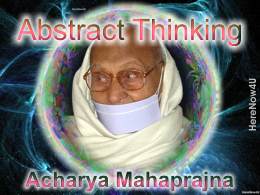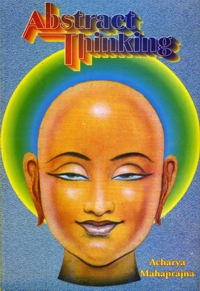
For the development of tolerance, attention is specially concentrated on the frontal lobe or the emotional area.
In the context of preksha meditation, this spot is known as the Centre of Peace, the Centre of Enlightenment. It is here that the fire of tolerance burns. There is blazing a big furnace here. The temperature is controlled by the hypothalamus. The emotional area of the brain is the creator of all excitement, frenzy and intolerance. Without changing or controlling it, there can be no development of the power of tolerance. An effective method of transforming the emotional area is to concentrate on the Centre of Enlightenment and the Centre of Peace.
The next step is to concentrate on these two centres while visualizing white colour thereon. These are the two practical exercises, which help control and pacify the emotional area of the brain. The greater the control, the fewer are the excitements and frenzies and the greater is the development of the power of tolerance. With the growth of tolerance, discipline would materialize of itself. A condition of mind would arise in which a man will not immediately flare up on hearing an adverse remark. Instead, he would start pondering on the purpose, the meaning behind another person's utterance. Thus he would come to grasp the essence of the matter, without wasting his energy on inconsequential things.
An Englishman wrote a letter to Mahatma Gandhi. The letter contained nothing but abuse. Gandhiji read it and dropped it into the waste-paper basket. Before doing so he extracted the oil pin, which held the letter together, and preserved it. Later, the writer of the letter himself came to see him. He said to Gandhiji, "Did you read my letter?" Mahatma Gandhi said, "Yes, I have gone through it very carefully." The Englishman said, "Well, what essence did you derive there form?" Gandhiji said "I extracted an oil-pin there from. That was the only essential thing it contained. I have preserved it. The rest, the inconsequential, I have thrown away".
With the evolution of the spirit of tolerance, a man grows balanced. He does not gloat over the pleasant, nor shrivel up when faced with the unpleasant. At times what is gratifying proves deceptive - it can even be dangerous. Greater fraud is committed in the guise of friendship than in open enmity. A friend often proves more treacherous than a foe. Also a man is subject to greater self-deception when faced with the pleasant than with the unpleasant. With the growth of tolerance, a man's power of discretion is kept awake in both pleasant and unpleasant circumstances.
The secret behind the development of tolerance is to concentrate on the Centre of Peace and the Centre of Enlightenment, to encourage healthy and relevant thinking.
Fasting constitutes a great experiment in the development of tolerance. Everyday in the morning the organism demands food. Those observing fasts, naturally develop the power of tolerance and will-power. Lord Mahavira undertook a great many penances and he did it not merely to torment his body. People are commonly mistaken in believing that Mahavira tormented his body too much, caused it a great deal of pain. As a matter of fact, Mahavira's penances were all experimental exercises. People ignore this fact when they say that Mahavira tormented his body, Even today, many people say that the Jains believe in causing torment to the body. The talk of tormenting is all misplaced. Certain experiments are made. A penance undertaken solely to cause pain to the body is wrong. It should never be performed. To make an experiment, however, is quite a different matter and perfectly in order. According to Ayurvedic canons, one must observe a fast at least once a week. Today we have grown oblivious of the significance of fasting. However, the people in the West are making experiments in fasting-therapy and these have been going on for many years. More standard works on fasting-therapy have been produced in the West than in India. From the experimental point-of-view, fasting is an exercise.
If a sadhak experiments with the heat of the sun for the purpose of developing tolerance - when, how long and in what posture should it be done? Starting at sunrise in the morning, a sadhak could perform this exercise for an hour. The posture of kayotsarga (in the lying-down position) or the lotus posture is quite suitable; to begin with, the sunbath might be taken for 10-15 minutes. Later, the duration of the exercise could be gradually increased to one hour.
 Acharya Mahaprajna
Acharya Mahaprajna

